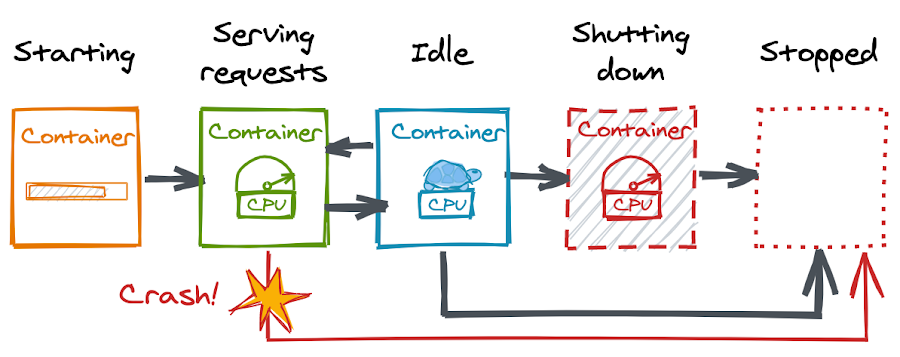Cloud Run runs and autoscales your container-based application. You can make the most of the platform when you understand the full container lifecycle
Editor’s note: Today’s post comes from Wietse Venema, a software engineer and trainer at Binx.io and the author of the O’Reilly book about Google Cloud Run. In today’s post, Wietse shares how understand the full container lifecycle, and the possible state transitions within it, so you can make the most of Cloud Run.
Serverless platform Cloud Run runs and autoscales your container-based application. You can make the most of this platform when you understand the full container lifecycle and the possible state transitions within it. Let’s review the states, from starting to stopped.

First, some context for those who have never heard of Cloud Run before (if you have, skip down to “Starting a Container”). The developer workflow on Cloud Run is a straightforward, three-step process:
- Write your application using your favorite programming language. Your application should start an HTTP server.
- Build and package your application into a container image.
- Deploy the container image to Cloud Run.
Once you deploy your container image, you’ll get a unique HTTPS endpoint back. Cloud Run then starts your container on demand to handle requests and ensures that all incoming requests are handled by dynamically adding and removing containers. Explore the hands-on quickstart to try it out for yourself.
It’s important to understand the distinction between a container image and a container. A container image is a package with your application and everything it needs to run; it’s the archive you store and distribute. A container represents the running processes of your application.

You can build and package your application into a container image in multiple ways. Docker gives you low-level control and flexibility. Jib and Buildpacks offer a higher-level, hands-off experience. You don’t need to be a container expert to be productive with Cloud Run, but if you are, Cloud Run won’t be in your way. Choose the containerization method that works best for you and your project.
#cloud #web-development #developer
